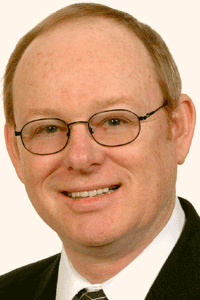
Tom Bach
Tom Bach works with organizations who want to impact their service and business skills in order to increase profits and productivity. He believes that the most important person in your business or organization is the person who works with the customer. Handling on-going change is an important skill to be able to communicate and interact with customers. Having worked both sides of the desk as a trainer and a marketing vice president, Tom understands the intricacies of appropriate communication with your staff and customers.
Contact Soar with Eagles for more information on Tom at 479.903.0208 or carrie@soarhigher.com
1. Anticipate change. It may occur next month, tomorrow, or this afternoon. Be aware that it will happen and be proactive with questions, such as: What are my customers doing differently? Do they have new products and/or services? How can you be involved with these changes? What services or products do we offer that will complement our customers’ needs? Become the only company your customer wants to call for assistance.
2. Give change a chance. I have this quotation on my computer:
“If there were no problems, there would be no opportunities.”
It’s easy to view change negatively, but change can be positive and a good thing. As I reflect on my professional and personal life, some of the greatest successes started out as perceived problems. Look at your problems as challenges and as opportunities to positively change.
3. Communicate change. If change happens, then everyone affected by the change needs to know about it. If you keep change a secret, you are undermining opportunities for success. Share change with other departments, managers and employees and especially your customers. You can do this through manager meetings and newsletters. In the case of your customers, visit with them and gain an understanding of their business. Encourage your customers to share changes in their organization with you. THEN, take the opportunity to become involved in the change.
4. Realize that change causes more change. Change is like a stone being thrown into a pond. It doesn’t just hit the water and sink. It sends out ripples that affect the entire pond. Change in your department will affect your entire organization. Change in your customer’s organization affects your relationship with your customer. If you identify change in its early stages, it is easier to identify and handle “the ripples in the pond.”
5. Don’t wait for “things to get back to normal.” I worked for an executive vice president who told the leadership in the organization he had some good news for us. His message was this, “Normal is not the way it was yesterday, last month, or last year. Normal is not the way it will be tomorrow, next month, or next year. Normal is the way it is right now, right here, today. If you’ve been waiting for things to get back to normal to do something, I have some good news: things are normal.”
When we draw on what we’ve learned from changes in the past, we can use them to make effective decisions today and sculpt what will take place in the future. Most important of all, we can use change to develop loyal, satisfied customers.